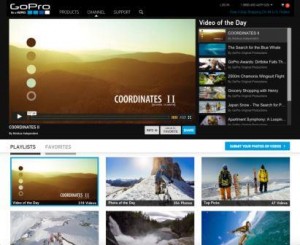YouTube SEO For B2B: How To Optimize Videos For YouTube Search
by Dmitry Dragilev , Op-Ed Contributor, September 14, 2017
YouTube, the domain of video game-playing stars and endless reaction videos, works for consumer businesses. Just ask Michael Dubin, founder of Dollar Shave Club, who turned an irreverent video for cheaper razors into a $1 billion company.
Now the question becomes whether or not YouTube can do the same for B2B businesses.
In my experience, YouTube can work as well — and even exceed results, for B2B businesses — as it does for consumer businesses. The audience that watches music videos is also, in a different context, the audience that buys enterprise software. You just have to figure out a way to find and target them.
Doing this requires a four-pronged approach, as follows.
1. Focus on Long-Tail Video Keywords
YouTube is the world’s largest search engine for video content. Unlike Facebook, video discovery on YouTube often starts with a search, not a public share from a friend. This search-focused discovery gives YouTube content exceptional reach and longevity over time. Content, once posted, will continue to accrue views as long as people search for it.
Taking advantage of this feature requires an explicit focus on video-friendly keywords, especially those targeting the long tail of the market. These are “show, don’t tell” keywords that can benefit from a visual explanation of the topic. “Content marketing examples” is a video keyword. “Content marketing agency” is not.
YouTube’s position as a place of discovery rather than decision also impacts your keyword selection. Pick long-tail keywords that focus on early stages in the buyer’s journey — i.e., awareness and consideration.
Keywords that answer “what is” and “how to” questions are particularly well suited for video content (such as “what is content marketing strategy”). Keywords that answer “where to” are better served with textual content (such as “where to buy content marketing software”).
Takeaway: In your YouTube strategy, focus on finding long-tail keywords where video content would make practical sense. Such content would amass thousands of views over time. Also focus on Awareness and Consideration-stage keywords.
2. Align Video Content with Audience Personas
The broad nature of consumer markets gives video content creators significant leeway in choosing the tone and setting of their videos. B2B marketers don’t have the same luxury. The narrower scope means that without clear targeting, your content will fail to resonate with its audience.
Sketching brief audience personas for each video based on subjective data can help in this regard.
Doing this is as simple as researching highly engaged users on related videos. Long comments, multiple questions, etc. are some engagement signals.
Publicly available data on these users — their “liked” videos, playlists, subscriptions and uploads — can help you sketch an audience persona for the topic in question. For instance, a user who frequently likes and subscribes to in-depth business strategy videos won’t likely engage with short, beginner-level content.
Takeaway: Research the target audience for each video on YouTube. Use this to decide the video content’s tone, length and style.
3. Emphasize Engagement
A search-focused YouTube strategy depends on strong rankings to yield results. And strong YouTube rankings, Backlinko’s study of 1.3 million videos revealed, is a function of engagement.
As Backlinko’s Brian Dean says: “YouTube encourages creators to publish videos that maximize engagement.”
Engagement is a measure of the time spent and number of actions taken on a video. The more viewers interact with the video, the higher its engagement, and thus, the higher its rankings.
A bit of manipulation can help here. Controversial video titles can often stoke debates in the comments. Alternatively, you can encourage debates by leaving comments yourself. (tip: use copywriting tactics from email signatures) A higher comment count correlates to higher rankings.
Similarly, creating longer videos can help. A user will likely spend more time on a 20-minute video than a 2-minute video. This higher “watch time” can count as a positive engagement signal.
In addition to these, an optimized video listing is a must. Attractive thumbnail images, keyword-rich descriptions and video titles, etc. are essential.
Takeaway: Encourage viewers to leave comments and spend more time on your videos. More engagement has a positive correlation with rankings.
YouTube is still mistakenly viewed as a “consumers-only” marketing channel. In truth, its search-focused nature makes it suitable for B2B marketing as well. The lower competition and higher barrier to entry (as compared to web search) makes it ideal for building long-term traffic in competitive industries. A focus on video keywords, audience-targeted content and engagement can help you reap traffic from YouTube search for years.
MediaPost.com: Search Marketing Daily
(54)
Report Post



